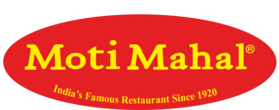ONLY a handful of chefs in all the history of gastronomy might be credited with inventing a cuisine, or even a dish. One of them is alive and well in Delhi. He is Kundan Lal Gujral, the founder of Moti Mahal – one of India’s most famous restaurants and a forerunner of tandoori cuisine. Without knowing about it, chances are that you have enjoyed the results of his culinary expertise.
Today thousands of restaurants in India, Pakistan, Britain, and North America serve tandoori chicken, butter chicken, chicken tikka, tandoori fish, and boti kabab, accompanied by nan and salad. In fact, for many Westerners these dishes are synonymous with Indian food. But 40 years ago, they were virtually unknown outside India.
An imposing figure with his fur cap and handlebar mustache, Kundan Lal effusively greets customers at the restaurant he founded in 1947 as a Hindu refugee from the newly created Pakistan.
Before Moti Mahal, the subcontinent had few restaurants where middle-class Indians or tourists could enjoy Indian cuisine. Hotel dining rooms and fashionable restaurants like Flury’s and Firpo’s in Calcutta usually served either Western dishes or Indian dishes Westernized beyond much recognition.
Authentic Indian cuisine could be ordered at tiny neighborhood restaurants and truck stops, called dhabas. The menus were limited to a few items, and they often left much to be desired from a sanitary point of view.
Cooks’ wages were low, however, making it relatively easy to entertain guests at home. As a result, India, unlike France or China, did not have a thriving restaurant culture.
Moti Mahal changed much of this. Soon Kundan Lal’s restaurant became a popular place in Delhi to dine.
The dishes that made it such a success were based on the food of Kundan Lal’s native town, Peshawar, in Pakistan, near Afghanistan.
The food of that region is plainer than traditional Indian food. In fact, it’s considered bland by some standards. Meals may consist of pieces of chicken or goat roasted on skewers over hot coals in a tandoor – a large clay oven buried in the ground.
“There was no tandoor in India until I had the first one made to my specifications,” Kundan Lal claims.
He found a tandoor maker, a fellow refugee, who experimented with different designs until he came up with an aboveground version that would work in a restaurant kitchen.
To make the food more palatable to customers’ tastes, Kundan Lal tried a variety of spices until eventually he settled upon the blend used today.
Moti Mahal’s tandoori chicken marinade includes ground coriander seeds, black pepper, and a mild red pepper that gives the dish its characteristic red color. Exact details about the ingredients and recipe are a carefully guarded secret.
The result is a deep-red-colored, charcoal-roasted chicken with a succulent interior and an evocative aroma.
To please richer palates, Kundan Lal brought to life butter chicken – tandoori chicken cooked with tomato, cream, and butter.
One of Kundan Lal’s early patrons was India’s first prime minister, Jawaharlal Nehru, who passed by the restaurant on his way to Independence Day ceremonies in the Red Fort, just a mile away.
Kundan Lal took food to Nehru in his car as a gesture of respect. Nehru later visited the restaurant and asked Kundan Lal to cater at the prime minister’s residence – a tradition continued by his daughter Indira Gandhi.
The restaurant soon became popular among visiting VIPs, including Richard Nixon, Canadian Prime Minister Pierre Trudeau, the King of Nepal, Pakistan’s late president Zulfikar Bhutto (a noted gourmet), and Soviet leaders Alexei Kosygin, Nikolai Bulganin, and Nikita Khrushchev.
At Khrushchev’s request, Kundan Lal opened a branch of his restaurant in 1963 at an international trade fair in Moscow.
When foreigners come to India, they ask to visit two places: the Taj Mahal and Moti Mahal,'' Kundan Lal boasts.My motto is: one foreigner, one tandoori chicken.” There are four Moti Mahal restaurants – three in Delhi, one in Moosoorie. Together they serve 800 chickens a day!
Kundan Lal’s son Nandi Lal Gujral is the chief executive of this mini chain. His grandsons Ashim and Marish, who studied hotel and restaurant management in college, are in charge of the kitchens and the accounts.
Try as I might, I couldn’t wheedle the recipe for tandoori chicken out of any member of the Gujral clan. Ashim, however, did agree to share the following recipe for another Moti Mahal specialty, Murghi Malai Kabob.
You’ll notice the recipe calls for Velveeta cheese. This is not available in India; they use a native cheese. Velveeta is closest to the Indian cheese used in this recipe.
Murghi Malai Kabab 3/4 pound boneless chicken breast 1/2 teaspoon salt 1 inch ginger crushed for juice l tablespoon crushed garlic 1 teaspoon lemon juice 3/4 inch sliced (3 ounces) Velveeta cheese 1/4 cup cream 1 tablespoon finely chopped coriander 1 finely chopped large green chili Salt and pepper to taste
Cut chicken into long strips about 3 to 4 inches wide. Combine salt, ginger, garlic, and lemon juices. Rub chicken with this mixture. Let chicken marinate about 1/2 hour.
In a food processor combine cheese and remaining ingredients. Rub this mixture on chicken and marinate 1 hour.
Thread chicken on skewers and cook either in hot oven at 400 degrees F. or on a barbecue grill about 20 minutes.
My favorite device for cooking this kind of food is a tabletop electric cooker called a Kabob-it.


